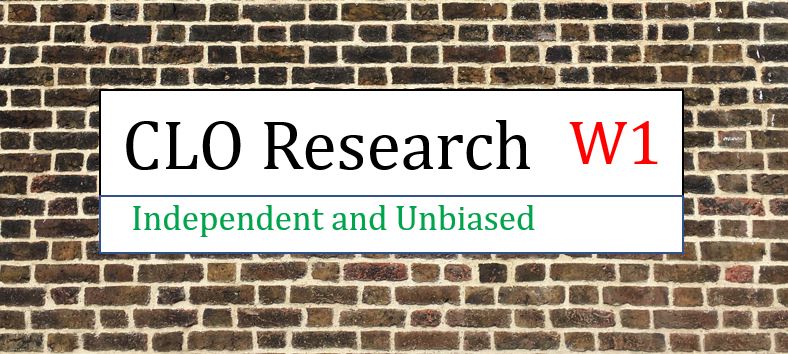EU CLOs: Does Par Build Really Matter?
The table below presents the percentile breakdown of annualised par gain for each quartile...
If you’re curious to explore our premium insights or would like a personal walkthrough of the website via Zoom, feel free to reach out at info@clopremium.co.uk. Please note, due to the proprietary nature of our research, we do not offer free trials.
The table below presents the percentile breakdown of annualised par gain for each quartile...
It could be assumed that managers with higher Weighted Average Spreads (WAS) are likely to present a higher collateral risk profile and, on average, face greater realised and unrealised principal losses when adjusted for vintage. Conversely, more conservative managers with lower WAS tend to display greater resilience, resulting in lower levels of principal loss, also adjusted for vintage. However, as illustrated in the table below, the median reported WAS metrics across the four quartiles by MVOC are very close, ranging from 3.94% to 3.96%, indicating that reported WAS appears to have limited influence on MVOC performance.
The table below presents the percentile breakdown of fixed-rate exposure for each quartile, classified by MVOC metrics based on asset...
A sample of 1,523 US BSL CLO deals (vintage 2013–2023) is included in this study. Deals with a collateral pool...
The estimated final equity IRRs for GoldenTree Loan Management EUR CLO 3 and Harvest CLO XIX are approximately...
It might be assumed that managers with higher Weighted Average Spreads (WAS) tend to carry a higher collateral risk profile and, on average, experience greater realised and unrealised principal losses when adjusted for vintage. Conversely, more conservative managers with lower WAS often demonstrate greater resilience, leading to lower levels of principal loss, also adjusted for vintage. However, a lower WAS does not always indicate a cleaner US BSL CLO collateral pool.
Market Value Over-Collateralization (MVOC), for instance, at the BB tranche level, is calculated by dividing the collateral market value (MV) by the sum of CLO liabilities (AAA to BB). MVOC is a crucial point-in-time metric for pricing CLO-rated tranches, closely monitored by primary and secondary market participants.
What do investors prefer? Generally, they seek managers who maximise the value of the collateral pool, rather than selling CCC assets simply to reduce CCC exposure artificially or to gain short-term OC ratio advantages. Ideally, managers would also consistently steer clear of credits that become problematic.
A sample of 67 reset US BSL CLO deals that were priced this year, each with fresh equity injections, is included in this study. The table in this article presents a breakdown of equity injections by manager, shown in terms of notional value, along with the corresponding increase in collateral notional post-reset. This is adjusted to reflect the portion of collateral notional funded by the rise in CLO-rated debt notional. In total, around $1.7 billion in equity notional was injected into these 67 deals. Many of these upsized reset deals have been outstanding for some time and no longer resemble the clean collateral pools they had at issuance. Consequently, part of the new equity capital was allocated to support the reset structure and cover the upfront costs associated with the reset. As a result, original equity investors in some of these reset deals may experience significant dilution of their holdings. Fair pricing of additional equity is crucial to maintaining balance between the original and new equity capital.
The table below presents the pre-reset adjusted triple-C exposure, AAA factor, par loss, and equity NAV for reset deals from the 2014 to 2020 vintages, priced this year.
Please refer to the table below for key metrics of deals just before and after a reset priced in 2024.
The recent reset of the RRE 3 Loan Management CLO saw its weighted average cost of capital (WACC) rise from 156 bps to 179 bps. However, the extension of the reinvestment period to July 2029 has made the upsized reset accretive for equity investors.
This study examines a sample of 218 deals from the 2015 to 2019 vintages, utilising the Morningstar European Euro-Denominated Loan...
A sample of 218 deals (2015–2019 vintages) managed by 40 managers is included in this study. The benchmark loan index...
A sample of 1,546 US BSL CLO deals (vintage 2013–2023) is included in this study. Deals with a collateral pool...
